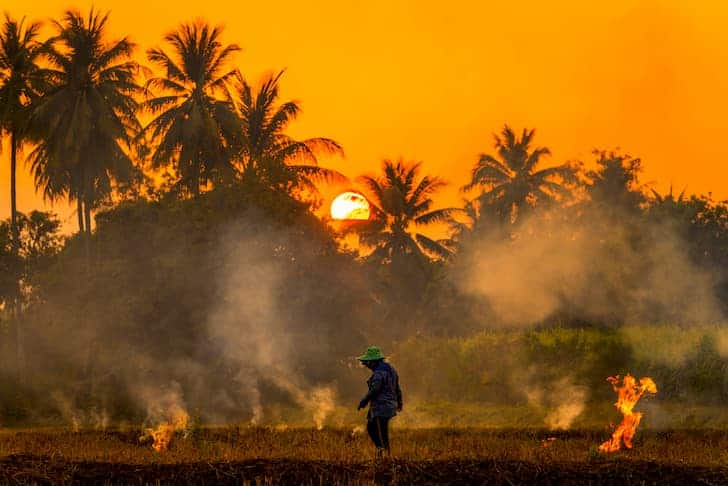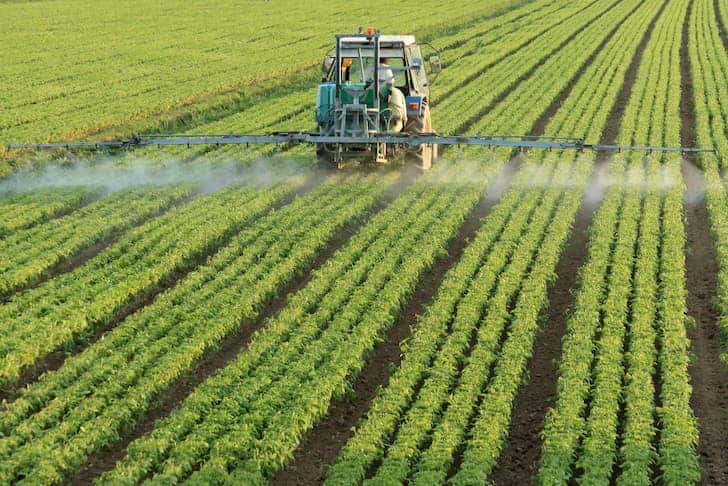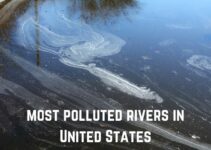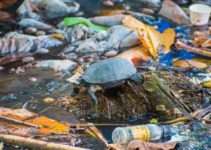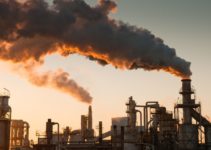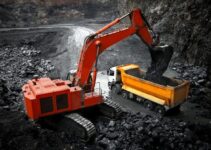The development of farming and agriculture has undoubtedly played a pivotal role in enabling human survival in the world today. It is a necessary means of survival, without which there would be widespread famines worldwide.
For thousands of years, agriculture was a natural process that did not harm the land it was done on. In fact, farmers were able to pass down their land for many generations, and it would still be fertile as ever.
However, modern agricultural practices have started the process of agricultural pollution. This process causes the degradation of the ecosystem, land, and environment due to the modern-day by-products of agriculture.
No single cause can be attributed to today’s widespread agricultural pollution. Agriculture is a complex activity in which the growth of crops and livestock have to be balanced perfectly.
Causes of Agricultural Pollution
We’ve got so many causes of agricultural pollution. The most common ones include:
1. Pesticides and Fertilizers
The use of pesticides and fertilizers has become a common practice among farmers. Pesticides help combat local pests, while fertilizers seek to improve soil fertility for a better yield.
Regrettably, over time, pests have developed resistance to these chemicals, necessitating higher concentrations or different formulations for effective control.
Similarly, the soil’s nutrient demands escalate, leading to an increased reliance on fertilizers to achieve desired productivity. As a result, escalating chemical concentrations are often required to maintain desired outcomes in agricultural processes.
Even worse, once these chemicals are applied, they have a long-lasting residual effect. Some of them mix with the water and seeps into the ground, causing the local streams that are supplied water from the ground to become contaminated.
The other proportion of the chemicals winds up absorbed by the plant itself and eventually transferred to animals once they eat the affected plants.
2. Contaminated Water
Contaminated water used for irrigation is another cause of agricultural pollution. Much of the water we use for growing crops comes from groundwater reservoirs, canals, and the rains.
Now, while plenty of it is clean and pure water, some of the sources are polluted with organic compounds and heavy metals. This happens due to the disposal of industrial and agricultural waste in local bodies of water.
As a result, the crops are exposed to water, which has small amounts of mercury, arsenic, lead, and cadmium dissolved in it. The process of agricultural pollution becomes harder to fight when such water poisons livestock and causes crop failure.
3. Soil Erosion and Sedimentation
Soil erosion and sedimentation are other factors to blame for agricultural pollution.
You see, the soil comprises many layers, and it’s only the topmost layer that can support farming or grazing. But due to inefficient farming practices, this soil is often left open for erosion, leading to declining fertility each year.
Now, whether eroded by water or wind, all this soil ends up deposited somewhere or the other.
The resulting sedimentation causes the soil to build up in areas such as rivers, streams, ditches, and surrounding fields. And so, the process of agricultural pollution prevents the natural movement of water, aquatic animals, and nutrients to other fertile areas.
4. Livestock
In the olden days, farmers would keep as much livestock as their land could support. The cattle, sheep, pigs, chickens, and other animals were fed natural diets, which were supplemented by the waste left over from the crops. As a result, the animals contributed to keeping the farm healthy as well.
But that has changed. Currently, livestock is grown in cramped conditions where it is fed unnatural diets and sent to slaughterhouses on a regular basis, contributing to agricultural pollution through emissions.
5. Pests and Weeds
Growing exotic crops and reducing the natural species in a certain area has become the norm for agriculture.
But what most people don’t know about this is that doing so contributes to agricultural pollution.
You see, with the arrival of new crops, the native population has to deal with new diseases, pests, and weeds that it is not capable of fighting.
As a result, the invasive species destroy the local vegetation and wildlife, altering the ecosystem permanently. This is especially the case with Genetically Modified Foods(GMO), which create plant and animal species that can wipe out the existing species in a matter of years.
6. Heavy Metals
Using fertilizers, manure, and other organic wastes containing heavy metals such as arsenic, cadmium, mercury, and lead can also lead to an accumulation of these heavy metals in the soil, while farming techniques like irrigation can also lead to an accumulation of selenium.
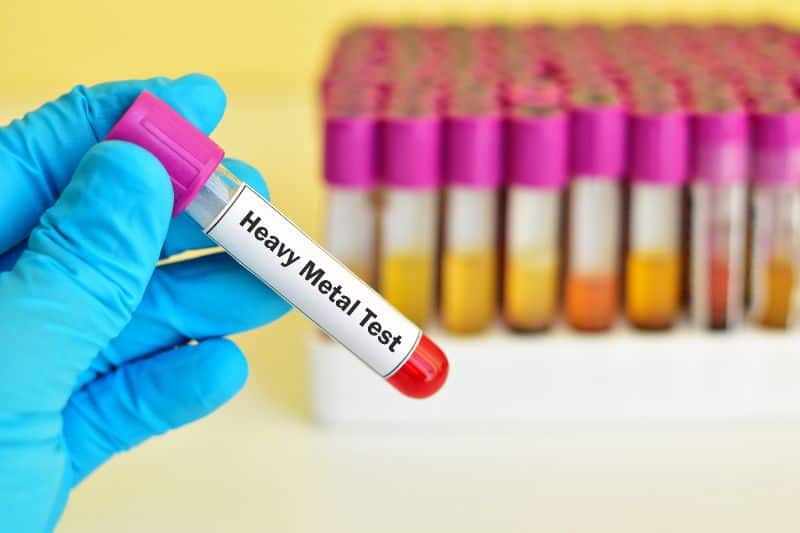
When these substances are washed into waterways, leach into groundwater sources, or get absorbed by plants, they are eventually consumed by animals and humans, causing heavy metal toxicity, affecting their health, or even causing premature deaths.
7. Soil Erosion and Sedimentation
Intensive farming operations greatly contribute to soil erosion and sedimentation as millions of fertile soils are broken down, degraded, and eroded via stormwater runoffs.
The sedimented soil ends up accumulating in rivers, streams, lakes, oceans, or other land regions, affecting water quality by contaminating it with the agrochemical residues present in the soil.
Sedimentation also contributes to the build-up of agricultural pollutants in waterways and other land areas.
But that’s not all — sedimentation may also restrict light penetration in water, affecting aquatic life forms, and the consequential turbidity can hamper the feeding habits of the aquatic fish.
8. Organic Contaminants
Manures and Biosolids frequently contain nutrients, including nitrogen, carbon, phosphorus, and sometimes contaminants such as personal care products (PPCPs) and pharmaceuticals.
These products have been found in human and animal bodies and are believed to have negative health impacts on wildlife, animals, and humans.
Agricultural pollution becomes even harder to manage with such types of organic contaminants.
9. Land Management
Poor land management also leads to an irreversible decline in soil fertility. Profound land management is crucial for keeping agricultural pollution to a minimum level. Therefore farmers should have an awareness of how their actions can impact the environment.
10. Excess Nutrients
The manure and fertilizers usually contain excess chemical nutrients, especially phosphorus and nitrogen, and cause nutrient pollution from agricultural sources. Excess nutrients can have tragic consequences on water quality and the survival of aquatic life.
When these nutrients are washed into the water systems, e.g., rivers, lakes, streams, or oceans during rainy periods, they alter the marine and freshwater nutrient cycles and, consequently, the species composition of the respective ecosystems.
The most common consequence is eutrophication, which depletes the water-dissolved oxygen, killing fish and other aquatic life.
Effects of Agricultural Pollution
Some of the effects of agricultural pollution include:
1. Health-Related Issues
Agricultural pollution is the main source of pollution in water and lakes. Chemicals from fertilizers and pesticides make their way into the groundwater that ends up in drinking water.
Health-related problems may occur as it contributes to blue baby syndrome which causes death in infants.
Generally, oil, degreasing agents, metals, and toxins from farm equipment cause health problems when they get into drinking water.
2. Effect on Aquatic Animals
Fertilizers, manure, waste, and ammonia undergo a transformation into nitrate and phosphates. When these substances are washed into nearby water bodies, they stimulate the growth of algae. As a consequence, oxygen levels in the water decrease, leading to the demise of numerous aquatic animals.
Again, bacteria and parasites from animal waste can get into drinking water, which can pose serious health hazards for various marine life and animals. Thus, the oxygen levels are likely to decline, which can cause the death of fish and other water animals.
Photo by: Deposit Photos
3. Eutrophication
Eutrophication is the dense growth of plant life and algae on the water surface, causing high incidences of algal blooms. In case of excessive use of fertilizers and pesticides, nitrogen, phosphorus, and other chemical nutrients get washed into nearby surface waters by rain or irrigation and lead to the eutrophication of rivers and lakes by supporting algae production.
Eutrophication extensively depletes the oxygen dissolved in water, which can adversely affect the aquatic system by killing fish and other aquatic biotas. It is also linked to an increased incidence of paralytic shellfish poisoning in humans, leading to death.
4. A Decrease in Crop Yields
The excessive use of fertilizers and pesticides combined with other agrochemicals control invasive pests, weeds, and diseases and produce large crop yields. However, the positive effects of these substances last for a certain time since the soil is likely to suffer long-term from the excessive use of these toxic chemical elements.
Since they remain in the soil for years, in the long run, crop yields are reduced, and the soil loses the optimal characteristics to produce crops due to agricultural pollution. They have the potential to contaminate waters and plants and kill soil microorganisms as well as beneficial insects.
5. Soil Pollution and Depletion of Soil Fertility
Agricultural pollution contaminates soil, leading to soil pollution and depletion of soil fertility by killing soil microorganisms.
The chemicals in pesticides and other different kinds of agrochemicals can cause long-lasting damage to the soil. This can gradually alter the soil microbial activities and chemistry, and reduce soil fertility.
Thus, every year millions of fertile soils are lost due to the use of synthetic fertilizers, pesticides, and herbicides combined with other farm practices.
6. Air Pollution
Agricultural pollution also leads to air pollution. Many machines such as tractors or harvesters used for tilling, harvesting, and other farm activities emit harmful greenhouse gases like CO2 by combusting fossil fuel, which, in turn, can lead to global warming.
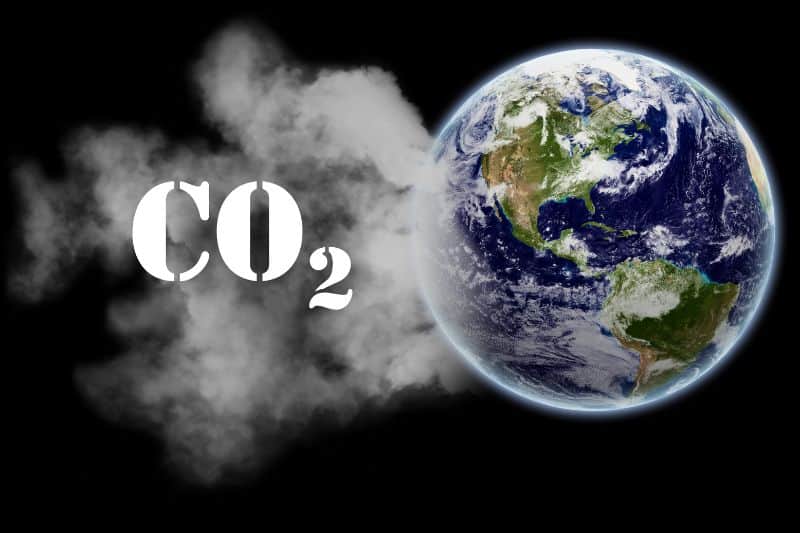
Additionally, farm animals and fertilized soils release substantial quantities of carbon and nitrogen-based compounds. These include methane, nitrogen oxides and ammonia, which are classified as potential greenhouse gases.
But that’s not all, various soil biochemical processes naturally contribute to the emission of numerous greenhouse gases.
7. Biodiversity Loss
Biodiversity is quite sensitive to small changes that may lead to big effects on the natural ecosystem.
The persistent use of chemical products in agricultural production degrades and destroys the soils and waters, affecting animals, plants, and wildlife, gradually altering the ecosystems which support biodiversity.
Furthermore, the use of pesticides can kill beneficial insects, soil microorganisms, birds, and some rare small species like butterflies, which have far-reaching effects on biodiversity.
If these insects vanish from the ecosystem, plants will be adversely affected as these insects are responsible for the fertilization of crops.
Since these chemicals remain in the soil for many years, the repercussions on biodiversity are massive.
8. Water Pollution
Water pollution is another big problem of agricultural pollution. Agricultural operations and practices such as inappropriate water management and irrigation mainly lead to water pollution from surface runoff, both to surface and groundwater.
With the excessive use of fertilizers and pesticides, many harmful substances reach our lakes, rivers, and eventually, the groundwater leading to widespread contamination of waterways and ground waters and depreciating water quality.
Soil erosion and sedimentation equally contaminate the water, making it dirty, and increasing its turbidity. In turn, plants, wildlife, humans, animals and aquatic life are negatively affected since we need clean drinking water to survive and stay healthy.
9. Effects on Animals
Agricultural pollution can also have adverse effects on animals. Since animals consume parts of the crop yield, they are heavily affected by pesticides and can even die from consuming these contaminated crops.
10. Effects on Plants
Agricultural pollution can even change the dynamics of the whole ecosystem as it becomes a problem for parts of the local plants since new invasive species could impact the population of native species adversely. These invasive species can carry pests and diseases which can harm the local ecosystem.
Since the local species cannot deal with some of the pests, biodiversity may be reduced.
The local native plants can also be affected by the use of genetically modified organisms in the form of crops leading to genetic contamination. This could also lead to the extinction of native species.
Solutions to Agricultural Pollution
Some of the solutions to agricultural pollution include:
1. Government Regulations
Keeping agricultural pollution in check is much harder than it seems. For the farms to become clean once again, levels of water, soil, and industrial pollution have to be kept in check. Over the last decade or so, governments have become stricter about enforcing regulations.

2. Awareness of farmers
Farmers inadvertently cause harm to the environmental system. As such, they should be taught that the excessive use of fertilizer and pesticides has a huge adverse impact on the whole ecosystem.
Creating awareness may not eliminate the problem completely. However, it can help mitigate it to a certain degree.
It’s important that farmers know:
- Applying the right quantity of pesticides and fertilizers that are necessary to get a reasonable crop yield.
- Using cover crops to prevent bare ground when the actual harvest is over, thus preventing soil erosion and loss of waterways.
- Planting grasses, trees, and fences along the edges of a field that lies on the borders of water bodies. They could act as buffers, and nutrient losses can be avoided by filtering out nutrients before reaching the groundwater.
- Reduction in the tillage of the fields to reduce runoffs, soil compaction, and erosion.
- Animal or cattle waste is a big cause of agricultural pollution. The management of these pollutants is crucial.
- Several manure treatment processes need to follow, which aim to reduce the adverse impact of manure on the environmental system.
3. Change in Agricultural Practice
Many farms are returning to traditional manure, direct irrigation from local water bodies, and organic means of keeping pest populations in check. But for the process of agricultural pollution to be fully reigned in, there must be a complete shift in how agriculture is practiced.
